Intro
Since millennia, “Learning” has always been an integral part of human life. Through learning we hunt, we plant, we make tools out of stones and sticks. “Learning” has been our way of knowing the world, passing down culture, and ensuring survival. With the projection of a possible dystopian post-human society, mankind must protect their survival through education. The current education system is mainly driven by mimetic education, where much emphasis has been placed on knowing rather than understanding. With the Education Reform proposed for 2030, more emphasis is placed on guiding students on application of knowledge, practice of traditional values and communication, and appreciation of one’s inner self and power.
Issues
In order to counter the future threats, three new aims are proposed to be injected into the education system, namely humanness, self-discovery and adaptability.
This collective campus is situated in the near future of 2030. Learning will be task driven, where is it mainly done through independent knowledge acquisition and application, to cultivate adaptability. The diagrams show a variety of learning spaces suited to different needs of users, and the programs over here are places for application of the acquired knowledge. Some examples are memory sharing, community farming, meditation, nature explorations, labs, black box, and makerspace.
The main pedagogy for the campus of tradition is to create opportunities for traditional face-to-face interaction, activities for community forming and thus creating unique identity for people even beyond the campus. After which, the campus of self aims to achieve self-awareness and consciousness by providing ideal space for high concentration and meditation, which triggers the notion of self. Lastly, the campus of future provides spaces for application of knowledge and celebration of technology.
Design Exploration
The campus is situated in Queenstown of Singapore for its rich historic value, community spirit and intense future development. It sits on a gentle hill across the rail corridor
With the new community being built on top of the old Tanglin halt community, a surge in young couples and children in 2030 is expected. The three campuses are arranged in a circular motion, so that contrasts of experiences can be appreciated in the intersection points where it reminds students of their roots while evolving together with technology.
The form of the architecture gently hugs the contour to accentuate the historical significance of the hill. The inviting form aims to invite people in and scoop activities into the nature uphill.
Future Outcome
This proposal offers a new perspective to rethink of the education aims that authorities to emphasize on, and also hopes to trigger individuals to think of their tradition and self while living in the era of high-speed technological development.

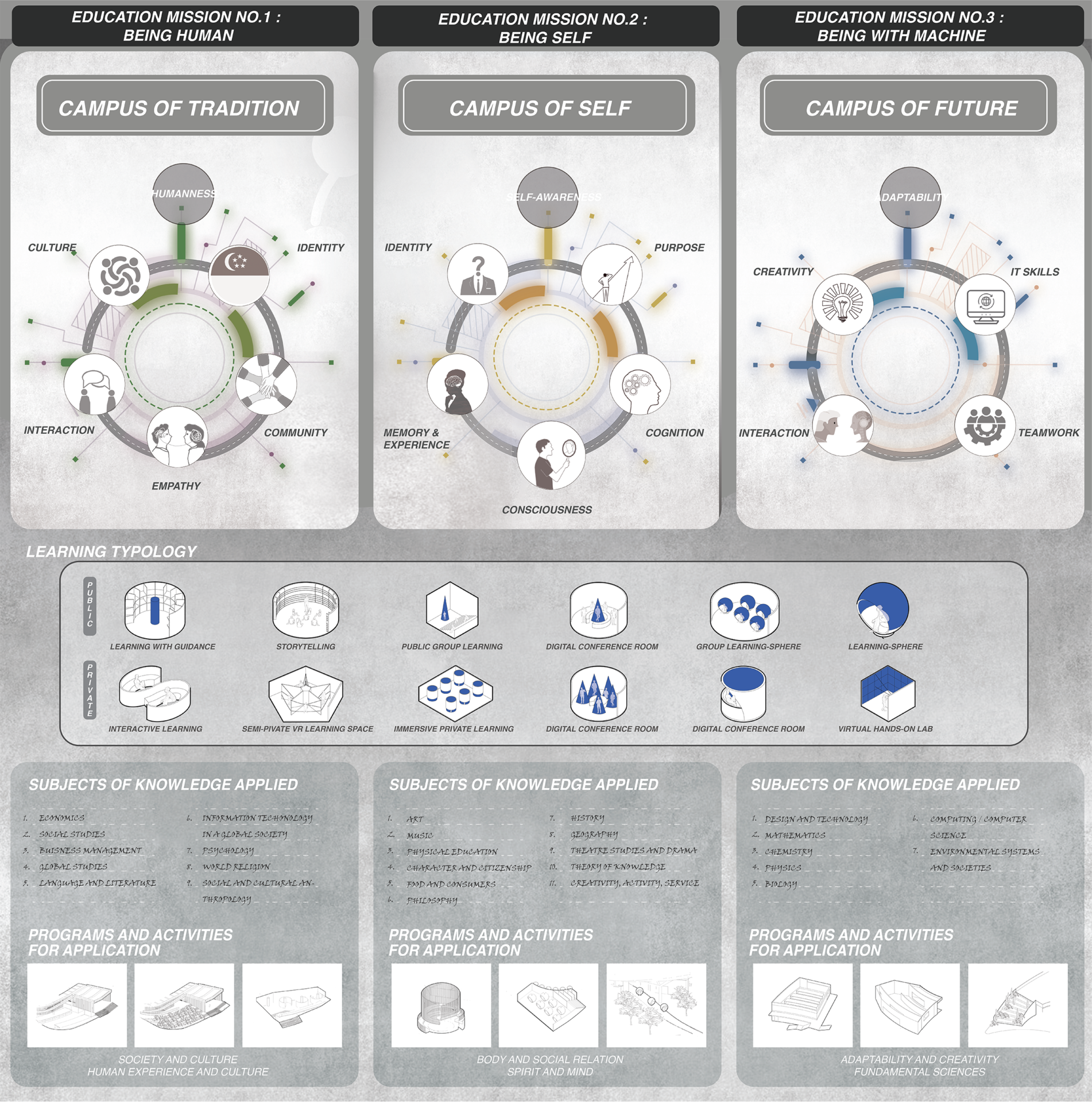
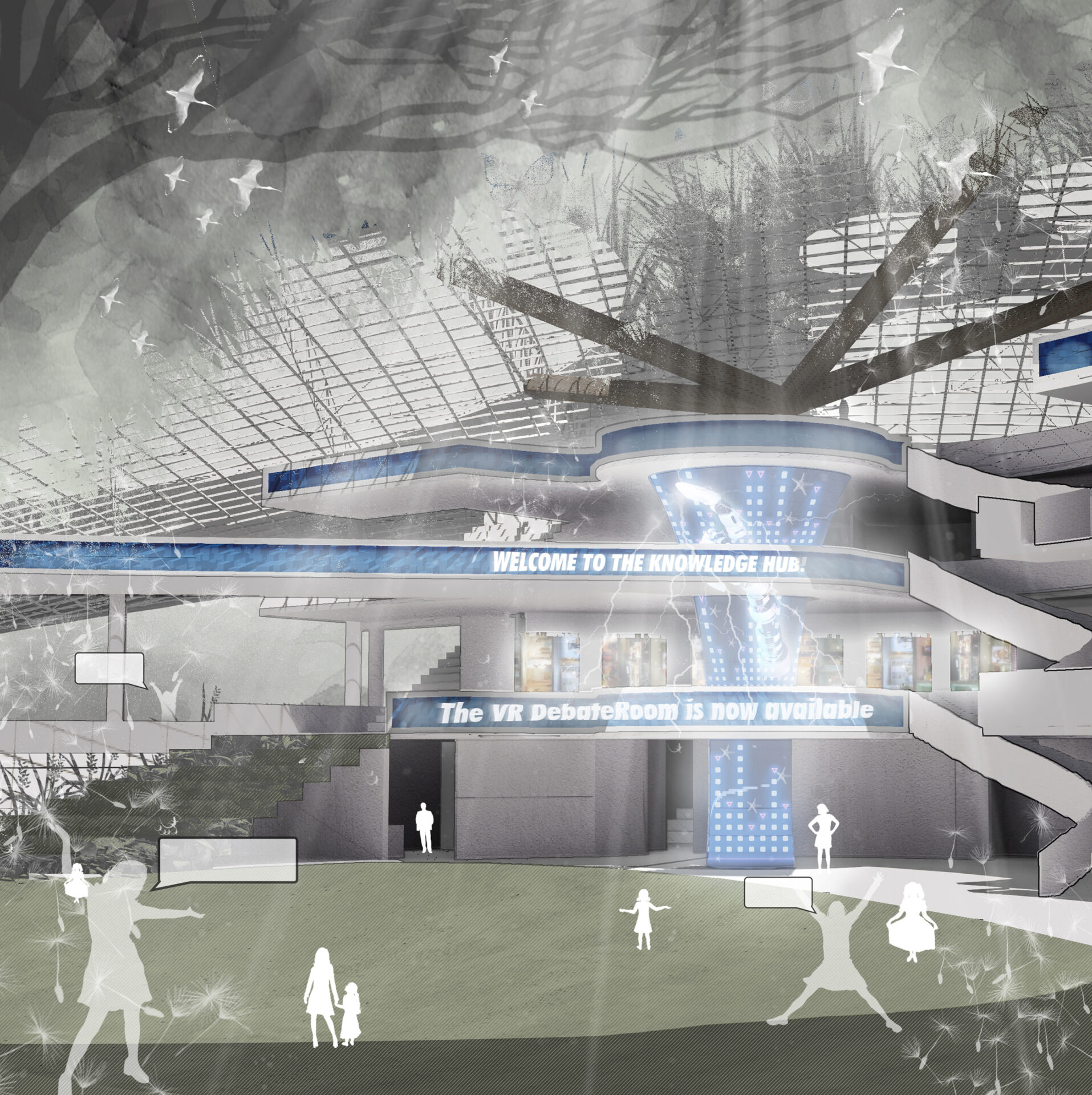
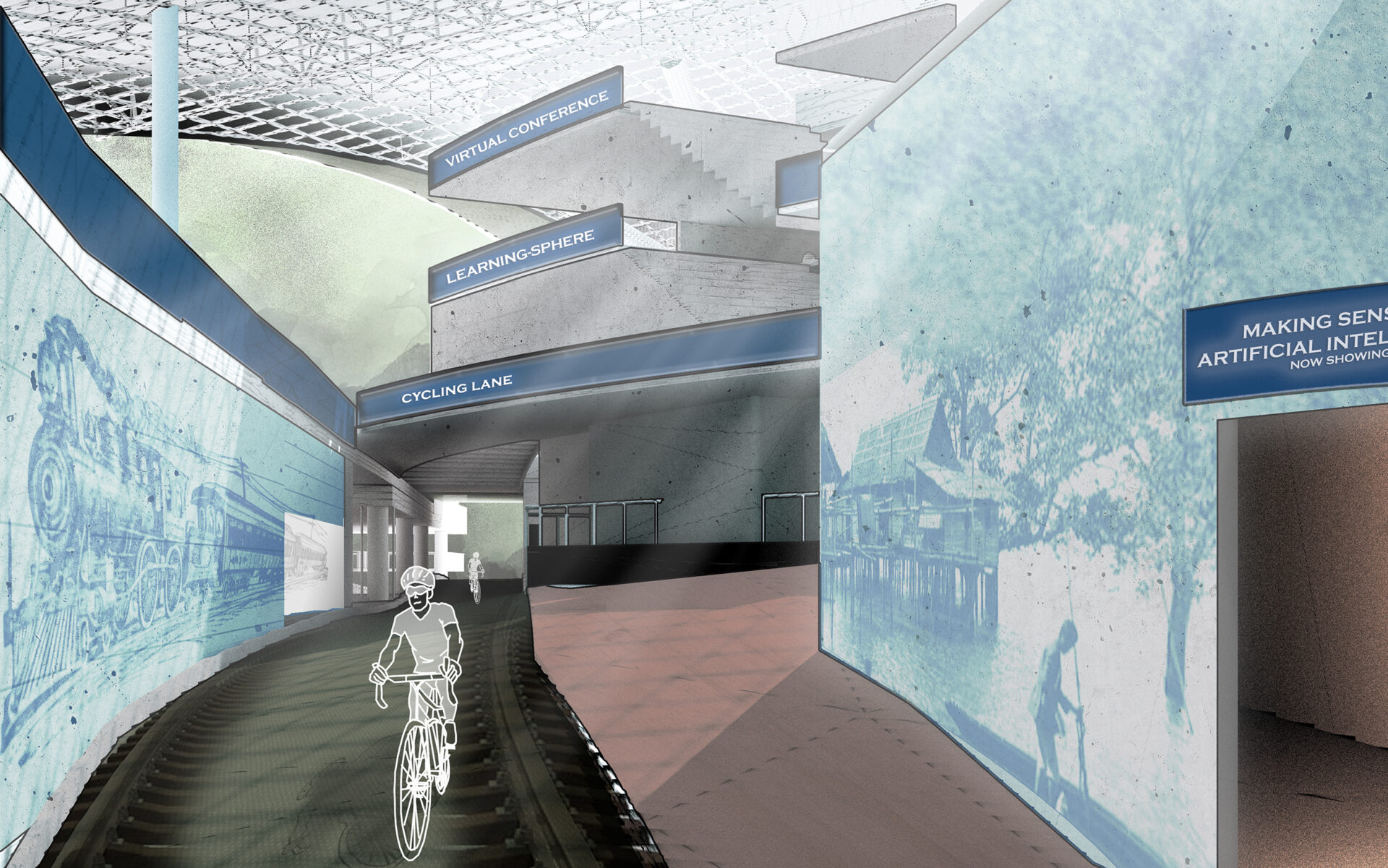
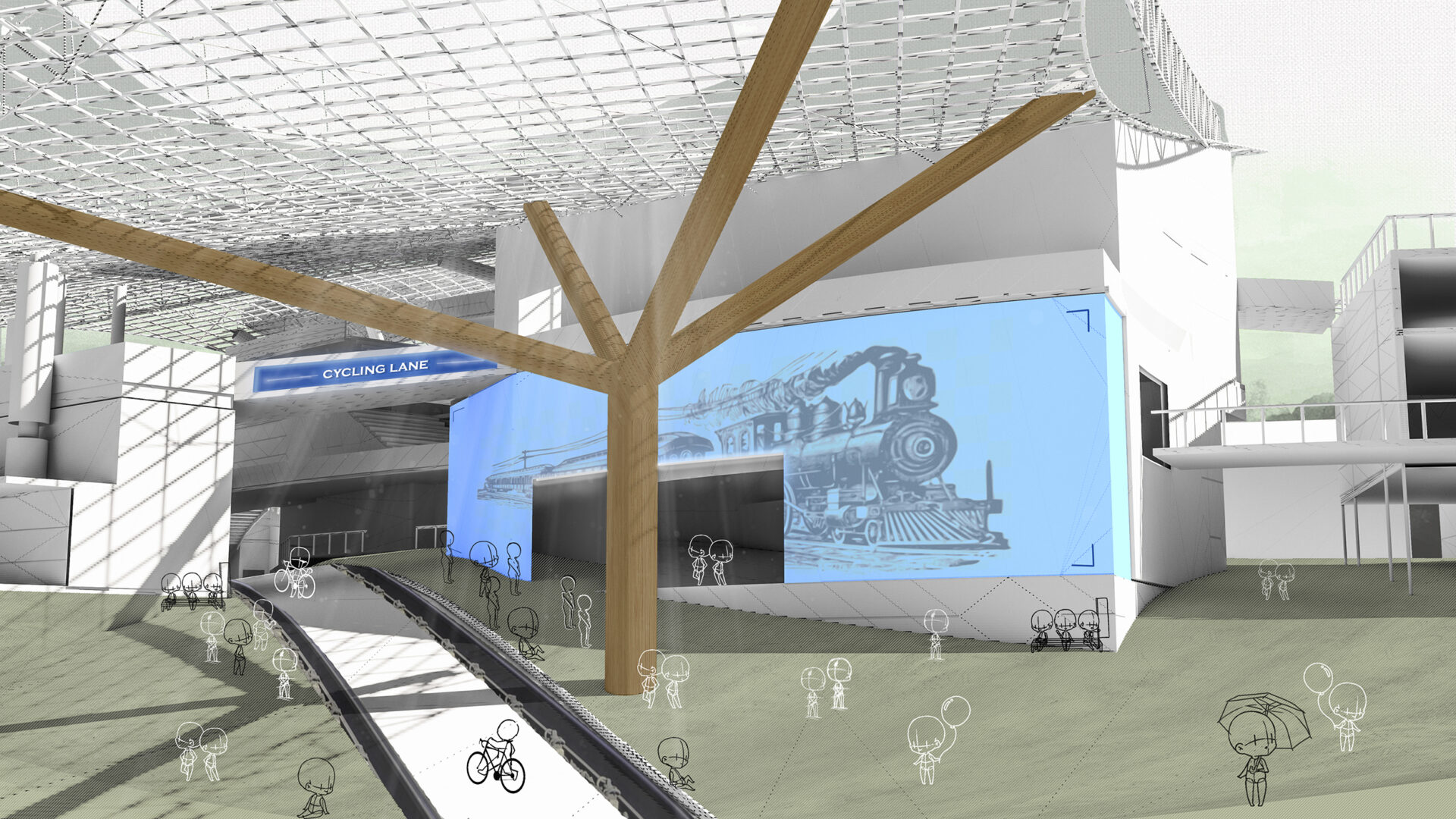
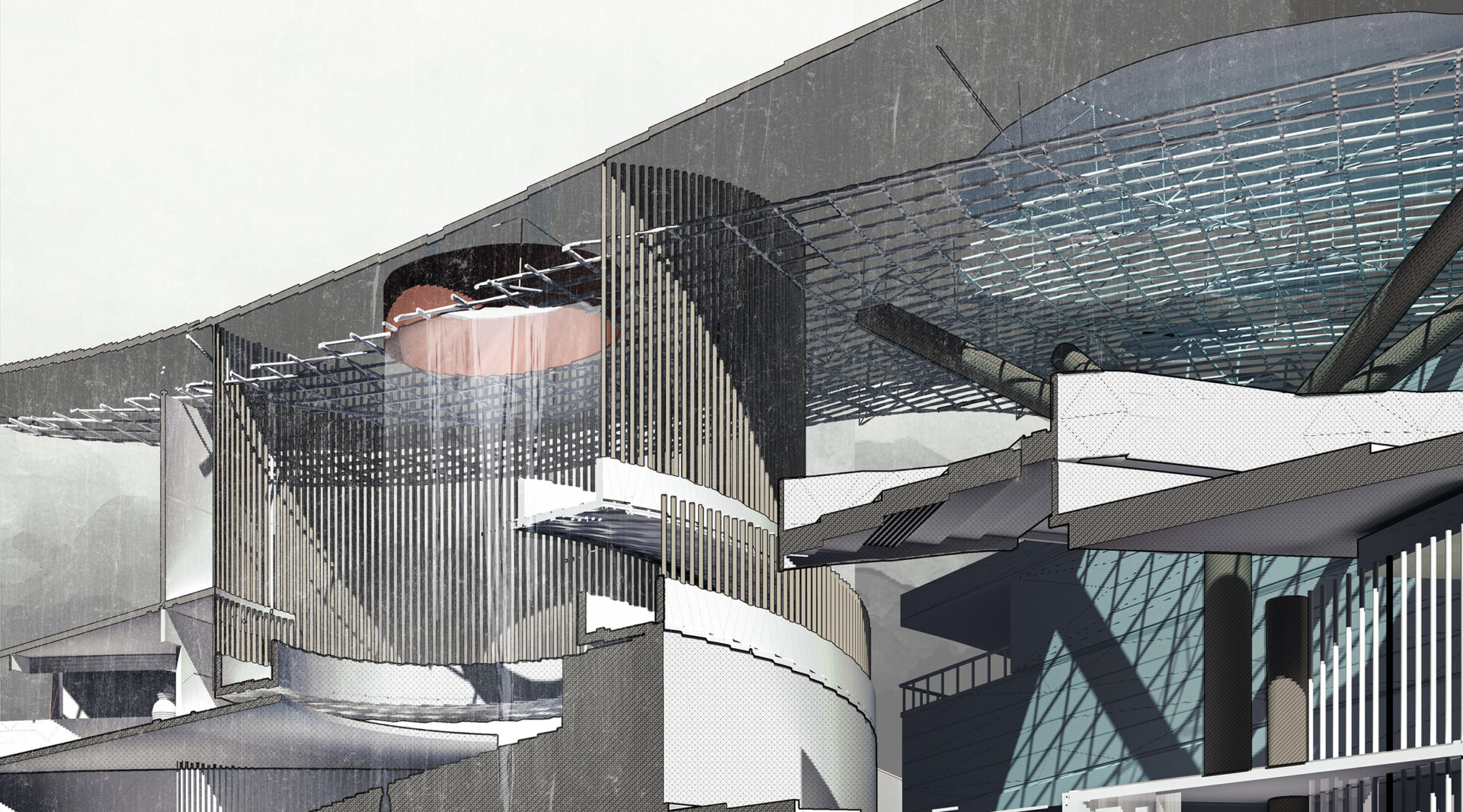
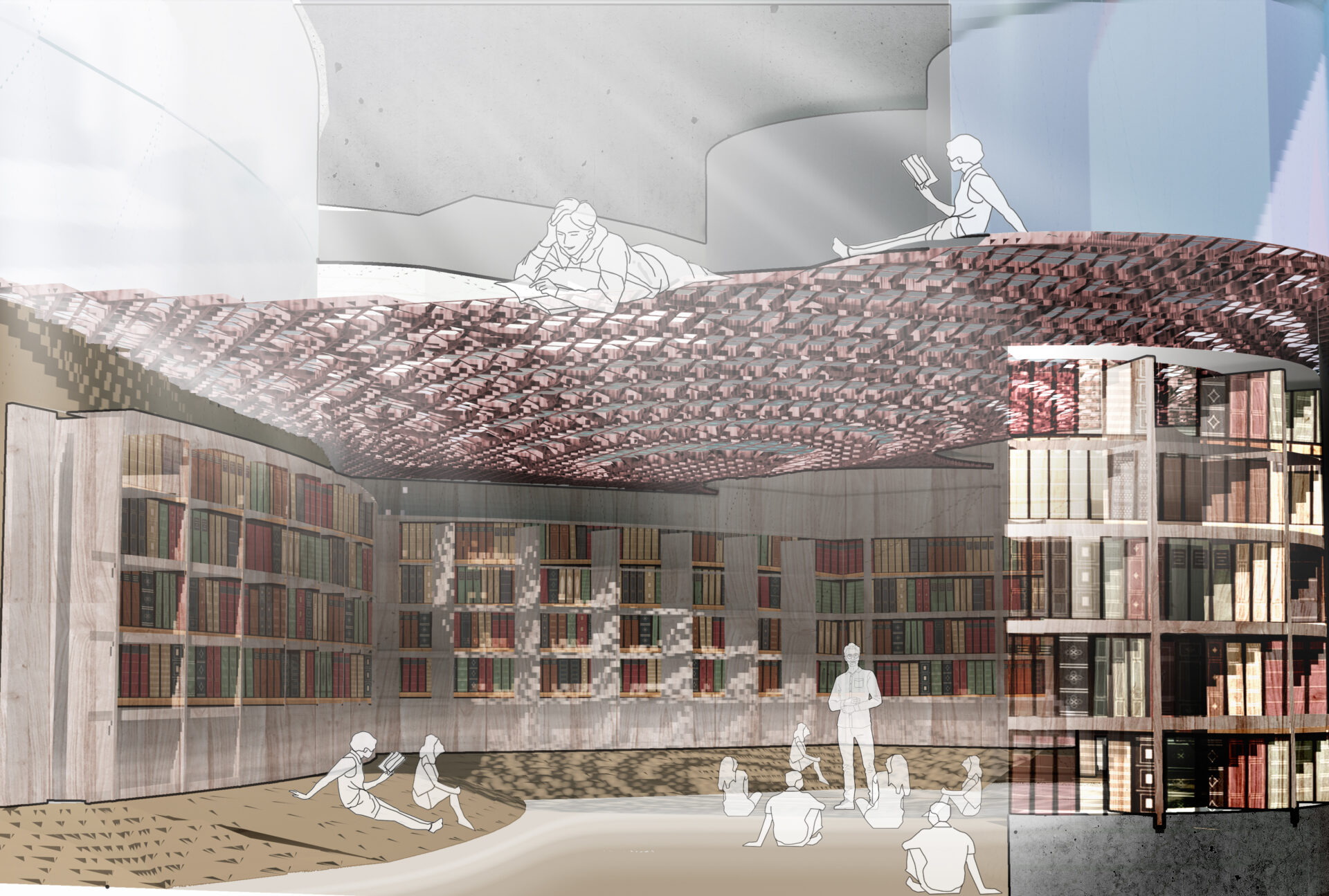
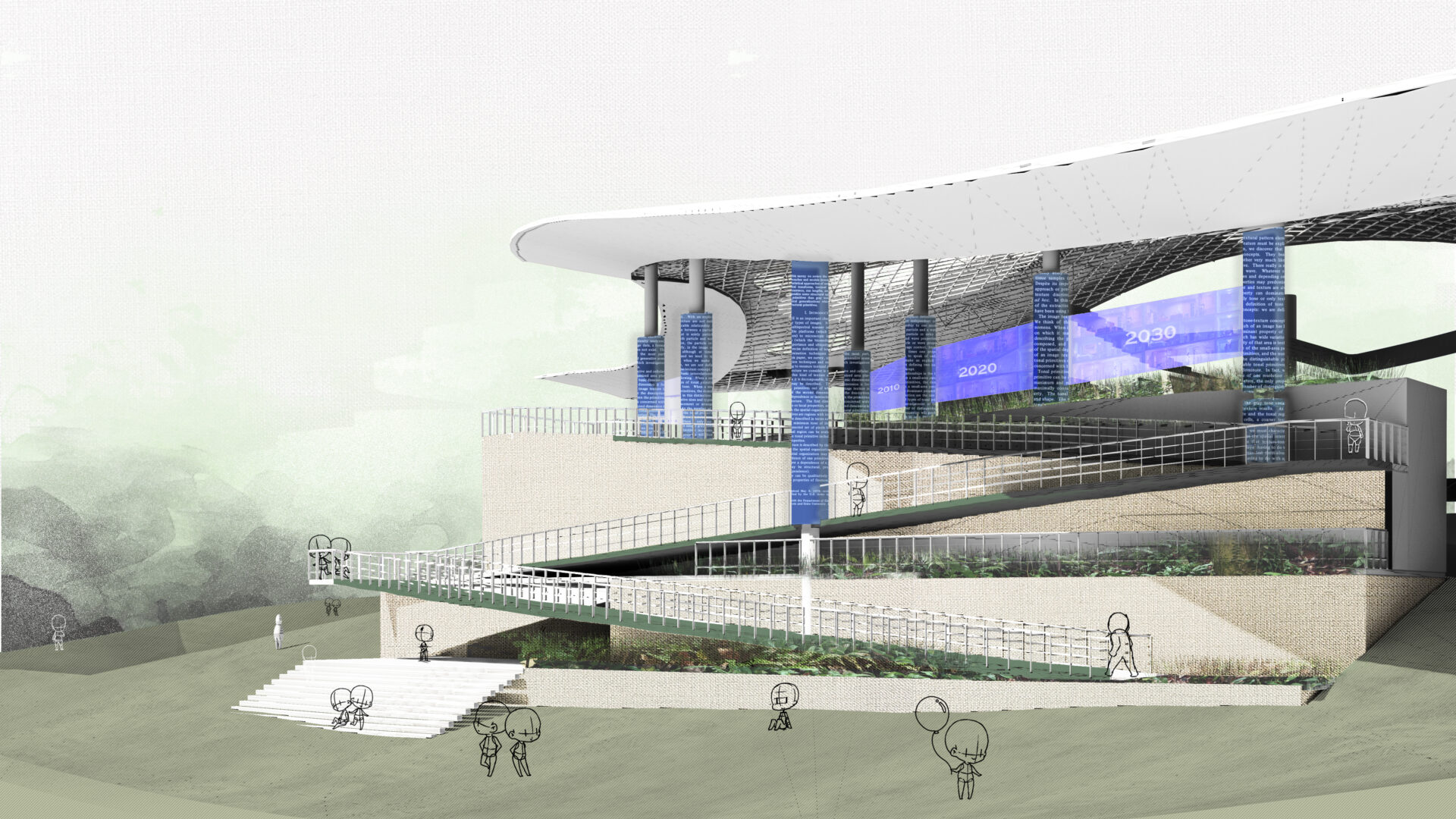
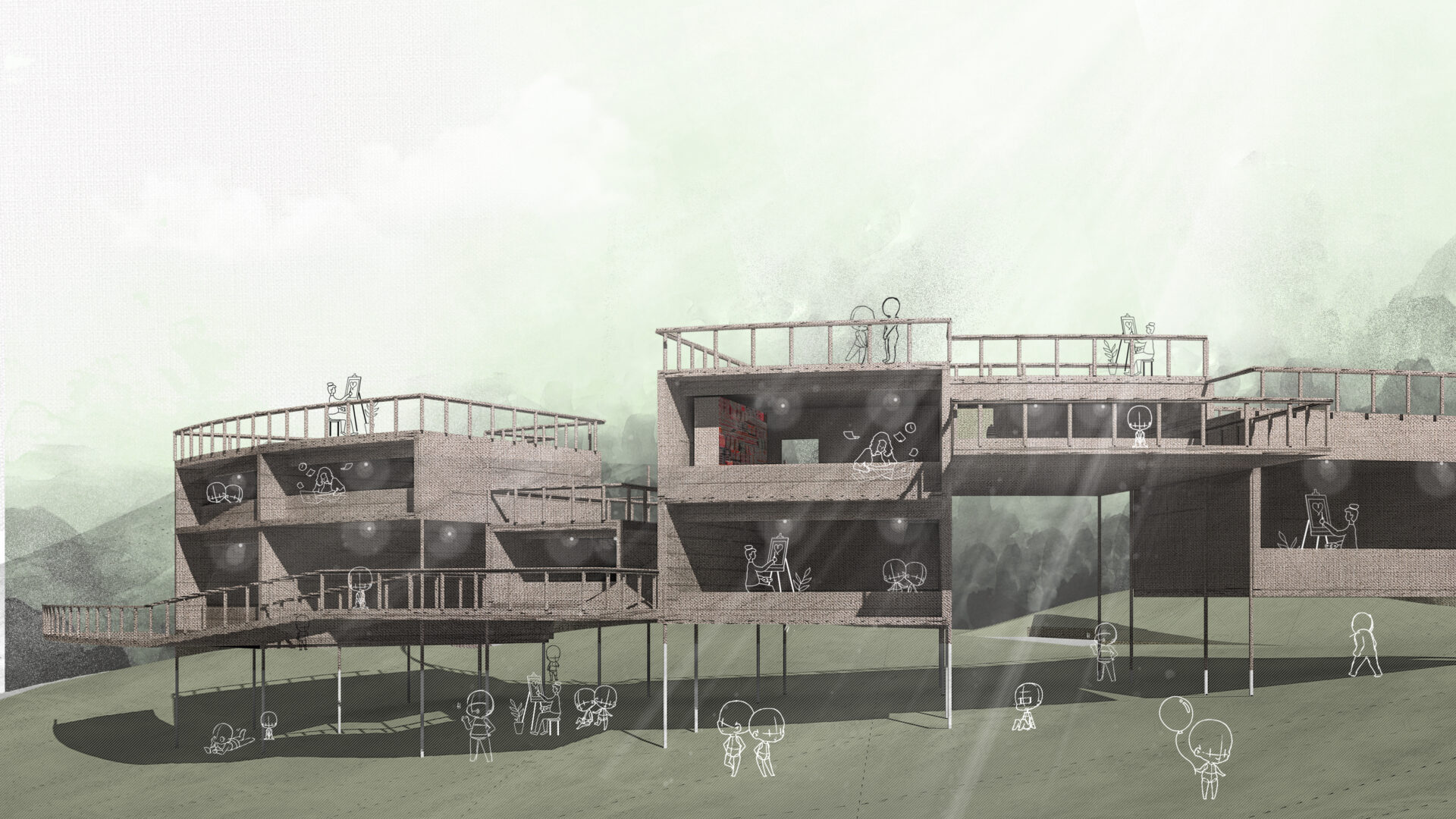
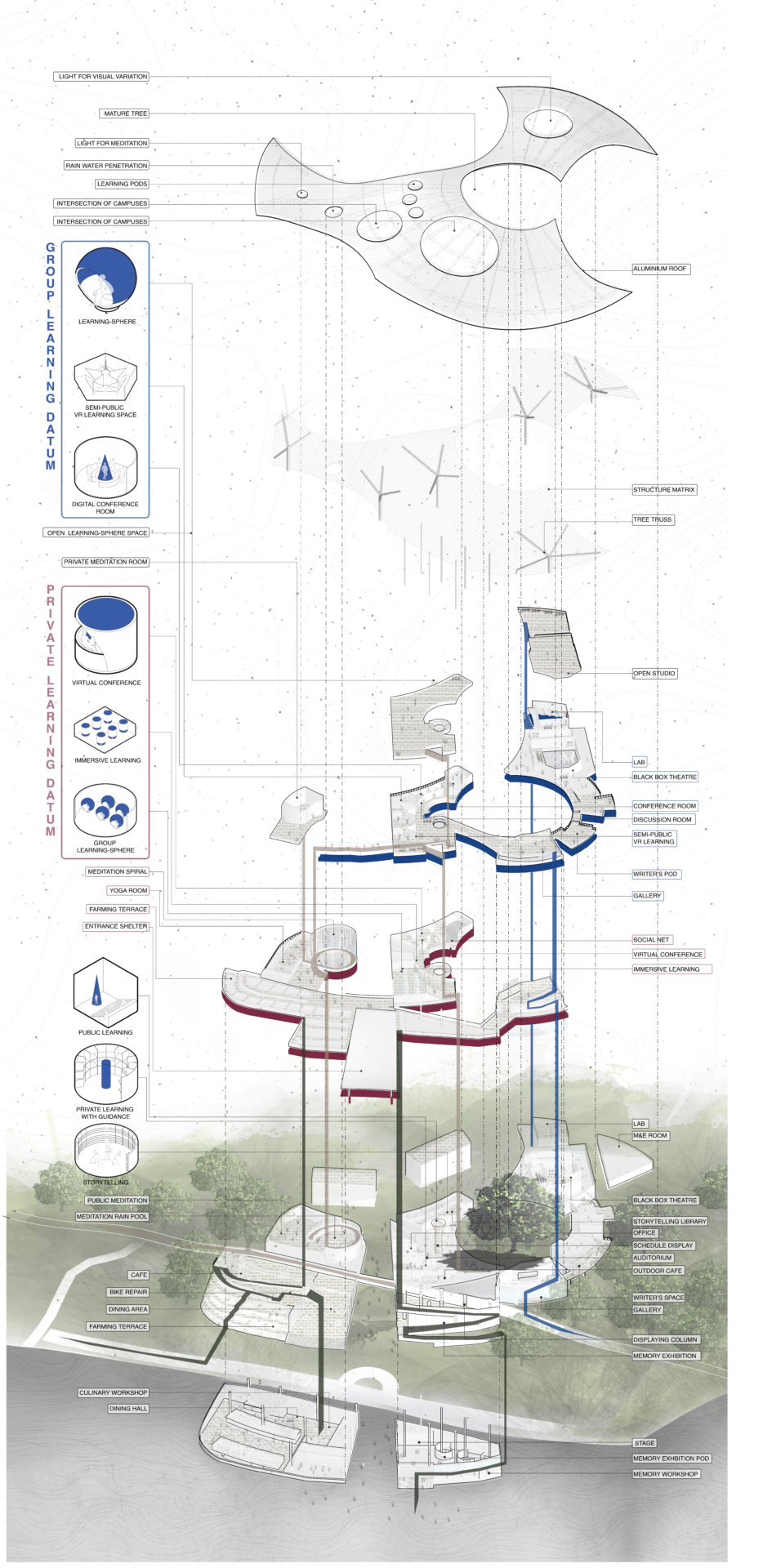
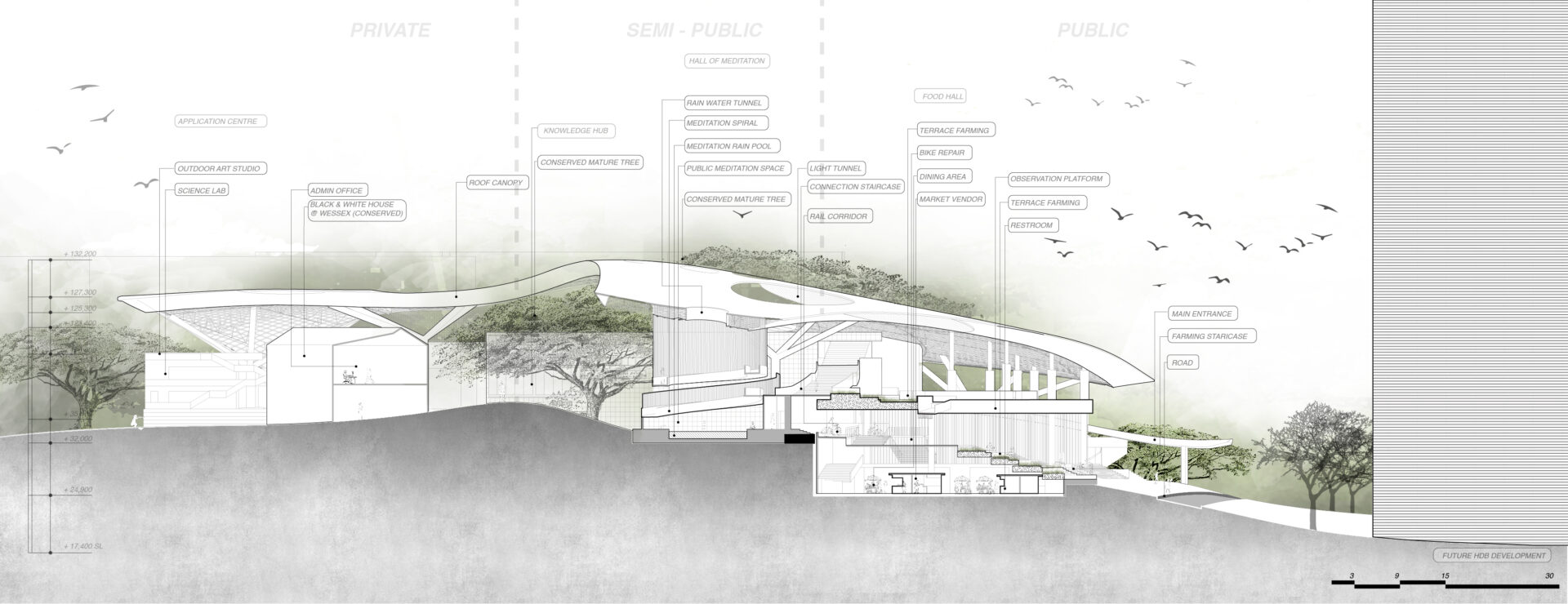
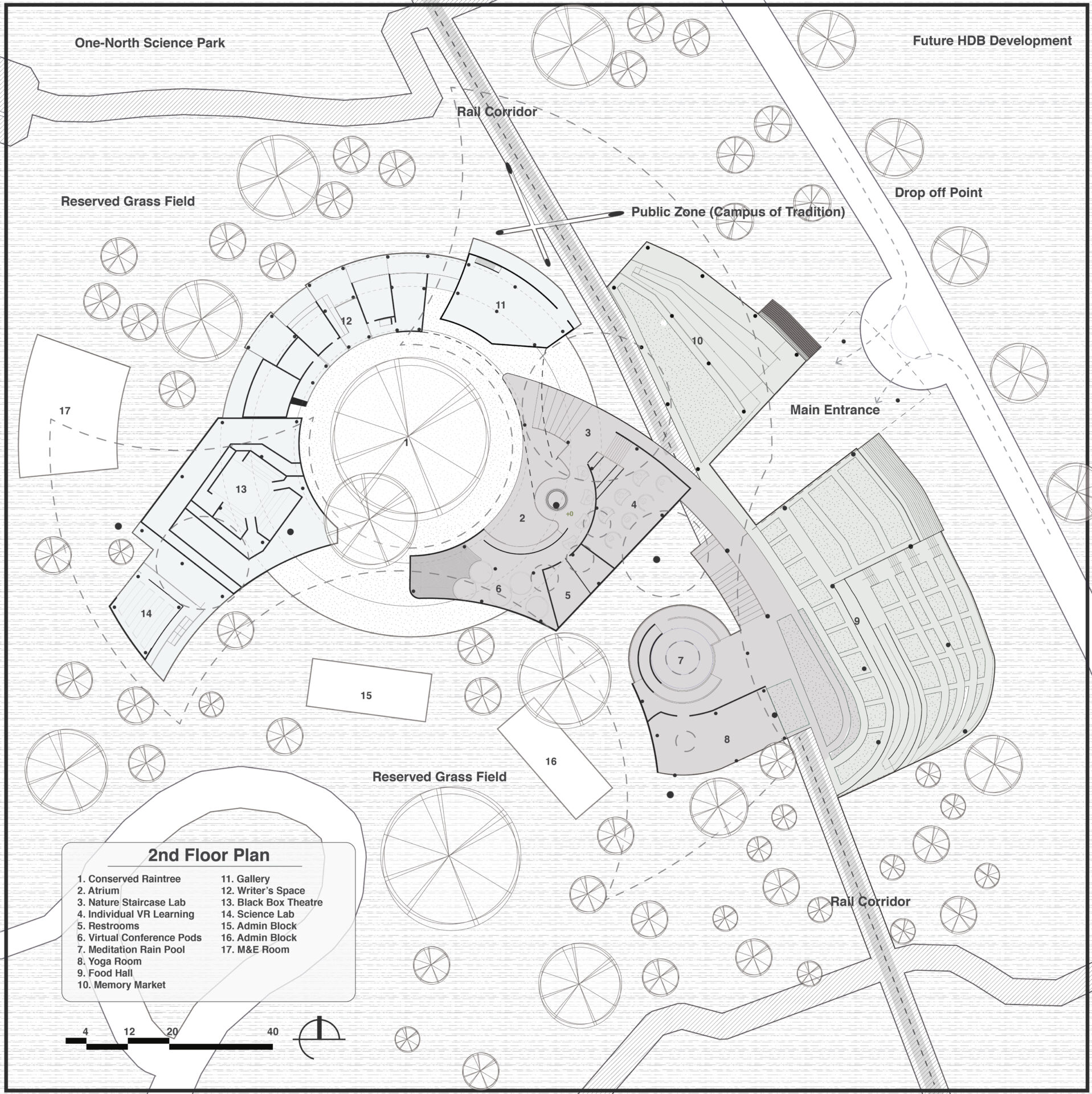
Supervisor's comments:
The impetus for the project is the future of education for the Anthropocene. The project is based on clear and in-depth research into education objectives, subject of study and pedagogy. The translation of the research into architectural form and space had been a struggle as the vision of the future might be difficult to fit into the existing formal language. In the end, the design concept was about the creation of an open structure with different inter-related planes punctured by vertical voids. Movement of people and students are able to flow freely through the building from the HDB town through the school into the black-and-white houses at the other end of the site. Free and flexible spaces are probably the best approach to be future ready, even for education structure. The integration of public into the more guarded school space through the rail corridor is also successful.
- Prof. Ho Puay Peng (Dr.)